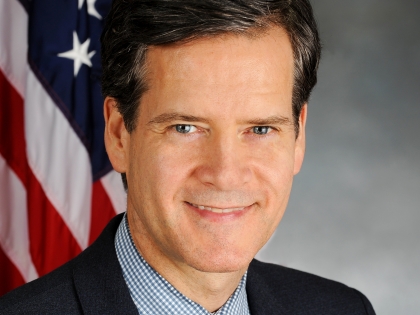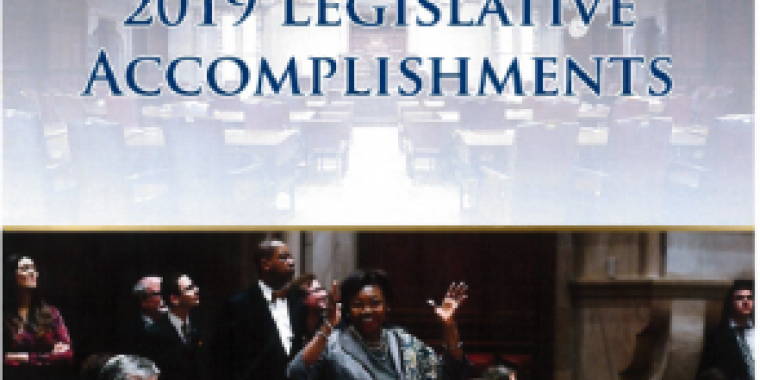
How are the Police Handling Hate Crimes?
Brad Hoylman
September 26, 2014

Last year, I requested that State Comptroller Thomas DiNapoli audit the oversight and management of New York's Hate Crimes Law. The request was part of a report I released in the wake of a 30% surge in bias crimes across the state against religious and ethnic minorities and LGBT people.
Yesterday, the Comptroller released the results of the audit and found that in several important areas the New York City Police Department and New York State Division of Criminal Justice Services can do a better job handling these serious crimes.
This is first the time our Hate Crimes Law has been audited in its 14-year history and I'm grateful to Comptroller DiNapoli for his leadership. Please see Comptroller DiNapoli’s press release below. Feel free to call me at (212) 633-8052 if you have any questions.
-------------------------------------------------------------------------------------------------------------------------------------
NEWS
From the Office of the New York State Comptroller
Thomas P. DiNapoli
September 25, 2014
DiNapoli Finds Opportunities for Improved NYPD Hate Crimes Reporting
State auditors examining New York City Police Department (NYPD) records were unable to confirm that all hate crimes in the city are properly recorded and reported by the department. They also found the NYPD conducted no centralized analysis on how to best use its resources to fight these crimes, according to a report released today by New York State Comptroller Thomas P. DiNapoli.
The Comptroller released a separate audit on how the Division of Criminal Justice Services (DCJS) monitors hate crimes statewide.
“Criminal acts involving violence, intimidation and destruction of property based on bias and prejudice cannot be tolerated,” DiNapoli said. “We need to make sure police departments across the state are reporting these incidents correctly so they can direct resources where they will have the greatest impact. While the NYPD has made a good faith effort to accurately report these insidious crimes, there are several areas where improvements are needed.”
“It's extremely disturbing that hate crimes are increasing in New York among a cross-section of different victims, including religious minorities, people of color, and LGBT individuals,” state Sen. Brad Hoylman, who requested the audits, said. “I commend State Comptroller DiNapoli for undertaking the first-ever audit of New York’s Hate Crimes Act, which is a crucial tool for understanding why these insidious crimes are on the rise. I’m extremely pleased, too, that the DCJS and NYPD have both accepted the Comptroller’s recommendations and are working to implement them. Only with the proper training, reporting and review mechanisms will we be able to stamp out bias crimes.”
Police Commissioner William J. Bratton said, “New York City is a place that celebrates diversity. A hate crime is an offense against all we stand for as a city – and the NYPD will do everything possible to stop these types of crimes, whether the hatred is based on race, gender, sexual orientation, religion, or ethnicity. The NYPD is committed to protecting every community.”
The state Hate Crimes Act of 2000 (Act) requires all New York law enforcement agencies to collect and report statistics on hate crimes to DCJS, which compiles hate crime data in an annual statewide report and submits summary data to the Federal Bureau of Investigation (FBI) for its collection and publication.
The NYPD is responsible for capturing, recording, and reporting hate crimes occurring in New York City. DCJS reported a statewide total of 720 hate crime incidents for calendar year 2012, including 374 incidents (52 percent) that reportedly took place in New York City. The NYPD’s data is drawn from incident reports that are prepared by its Hate Crimes Task Force.
DiNapoli’s auditors found that from 2010 through 2012, there were data disparities between the NYPD’s individual incident reports and summaries of bias-related crimes reported. In 2010, for example, individual incident reports indicated that there were 371 bias-related crimes in the city. However, because of misreporting by the NYPD, DCJS’s annual report stated that there were 350 such crimes.
DiNapoli’s auditors also found the NYPD had no formal central office analysis of, or corresponding action plan for, the bias-related crime data that was collected. Thus, such data was not used for central office management decision-making purposes.
Auditors identified improvement opportunities to enhance the NYPD’s training program regarding bias incidents. They recommended the NYPD:
Develop a document tracking system to properly account for all bias-related incidents to ensure that all official summary records of hate crime-related data are reconciled and supported by properly accounted for incident reports
Periodically analyze the captured hate crime-related summary data to make tactical and strategic decisions on community outreach, staff deployment and budgeting;
Develop a training-related record keeping system that can be easily accessed by NYPD management to ensure that all officers receive required training; and
Consider requiring periodic hate crime-related training as part of the regular NYPD training curriculum.
NYPD officials generally agreed with the audit’s recommendations and have begun taking steps to implement them. For a copy of the report, visit: http://osc.state.ny.us/audits/allaudits/093014/14n2.pdf.
In the audit of DCJS, auditors found the agency adequately monitors hate crime reporting and accurately reports hate crime data that it receives to federal authorities.
However, auditors found DCJS only reports its data associated with a single bias, even when an agency reports multiple biases involved in a crime. For example, in one case, an agency reported multiple biases on its hate crime incident report: both anti-male homosexual and anti-Arab. Because its system allows staff to only record one bias per incident, the division reported the case only as an anti-male homosexual incident.
DCJS stated that police agencies rarely report more than one bias, but the usual process in such instances would be to contact the agency to determine which bias should be recorded. In this case, auditors found no evidence the division contacted the reporting department. The same department also stated it had another multiple-bias incident and had to report that incident as only a single bias.
As a result of this system limitation, stakeholders may not be fully aware of the number of incidents where multiple-bias motivations have been reported and may therefore be relying on skewed data.
DCJS officials told auditors they will work with the Office of Information Technology Services to assess the options to modify the database to collect multiple-bias types. For a copy of the report, visit: http://osc.state.ny.us/audits/allaudits/093014/13s67.pdf.
Share this Article or Press Release
Newsroom
Go to NewsroomSenator Hoylman's Senior Resource Guide
July 1, 2019
2019 Legislative Session Accomplishments
June 24, 2019
